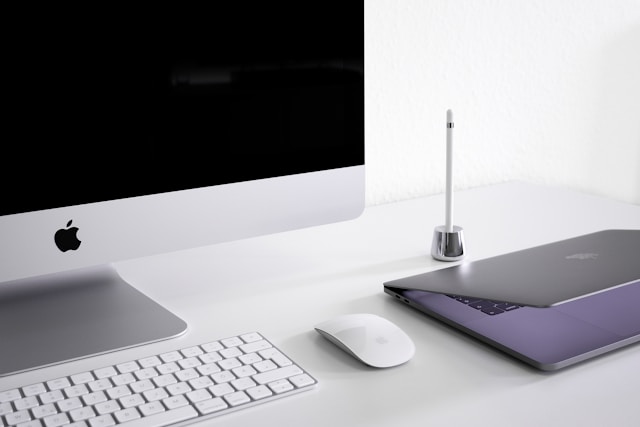
Buying a refurbished iMac can be a smart, cost-effective choice, but it’s essential to know what to look for to ensure you get the best machine for your needs. Refurbished iMacs offer excellent performance at a fraction of the price of new models, but understanding the key features that will best suit your needs is crucial for making a smart purchase. This guide will break down the essential features to consider when choosing the best refurbished iMac, helping you navigate through processor options, RAM, storage, screen size, and more.
1. Processor (CPU) Performance: Finding the Right Power
The processor is the heart of your iMac, and its speed and performance will significantly impact how efficiently the machine runs your applications. Refurbished iMacs come with a range of processors, from Intel Core i5 and i7 chips to Apple’s newer M1 and M2 chips in more recent models.
- Intel Processors: Older refurbished models will likely come with Intel Core processors. For general use—like browsing the web, streaming content, or using productivity apps—a Core i5 processor should be sufficient. However, if you plan on running more intensive applications like Adobe Creative Suite, video editing software, or 3D rendering, a Core i7 or i9 processor may be a better choice.
- Apple Silicon (M1/M2): If you’re opting for one of the newer refurbished models that feature Apple’s M1 or M2 chips, you’ll benefit from faster performance and better energy efficiency compared to Intel chips. The M1, for instance, provides a significant performance boost, especially in tasks like graphic design, video editing, and coding. If you’re looking for future-proofing your iMac, Apple Silicon models are worth considering, even in the refurbished market.
2. RAM: Multitasking Made Easy
RAM, or Random Access Memory, plays a critical role in how efficiently your iMac handles multiple tasks. The more RAM you have, the better your iMac will perform when running several programs simultaneously or working with large files.
- 8GB of RAM: For casual users who primarily use their iMacs for tasks like web browsing, email, and streaming, 8GB of RAM is usually enough. This configuration will handle most everyday tasks without any noticeable lag.
- 16GB or More: If your work involves heavy multitasking, video editing, graphic design, or professional software that requires a lot of memory, it’s best to choose an iMac with 16GB or more of RAM. While many iMacs allow RAM upgrades, opting for a machine that already has higher RAM will save you the hassle and cost of upgrading later.
When buying refurbished, keep in mind that not all models allow you to upgrade the RAM after purchase. Ensure that the iMac you’re considering has enough memory to handle your current and future needs.
3. Storage: SSD vs. Fusion Drive
The type and size of storage in your iMac are crucial for both performance and how much data you can store. A Refurbished iMac typically comes with either traditional hard drives, Fusion Drives, or solid-state drives (SSDs).
- Solid-State Drives (SSDs): SSDs offer much faster performance than traditional hard drives, especially when it comes to boot times, file transfers, and opening applications. If speed is a priority, especially for tasks like video editing or managing large files, an SSD is highly recommended. You’ll often find refurbished iMacs with SSDs ranging from 256GB to 1TB in size.
- Fusion Drives: Some refurbished iMacs come with Apple’s Fusion Drive, which combines a small SSD with a larger traditional hard drive. While this offers more storage at a lower price, the performance is slower than a pure SSD, though it still outperforms standard hard drives. Fusion Drives are a good middle ground if you need more storage but are willing to compromise slightly on speed.
- Storage Capacity: Consider how much storage you’ll actually need. For light users who mainly store documents, stream music, or work from the cloud, 256GB or 512GB will likely suffice. However, if you store large files like videos, photos, or run multiple applications that require significant storage, you’ll want at least 1TB.
Conclusion
Choosing the best refurbished iMac involves understanding your specific needs and how different features—such as the processor, RAM, storage, display, and graphics card—affect the machine’s performance. Whether you’re a creative professional who needs powerful performance or a casual user looking for a cost-effective option, focusing on the key features will ensure you make a smart and informed choice. By carefully considering what’s most important for your daily tasks, you can find a refurbished iMac that delivers exceptional value and performance for years to come.

Abdul Qadeer is highly experienced in creating engaging content that adds real value to a blog, website, or brand. He is creating content for multiple niches like technology, SEO, Marketing, Health, Education and Career Development, etc.